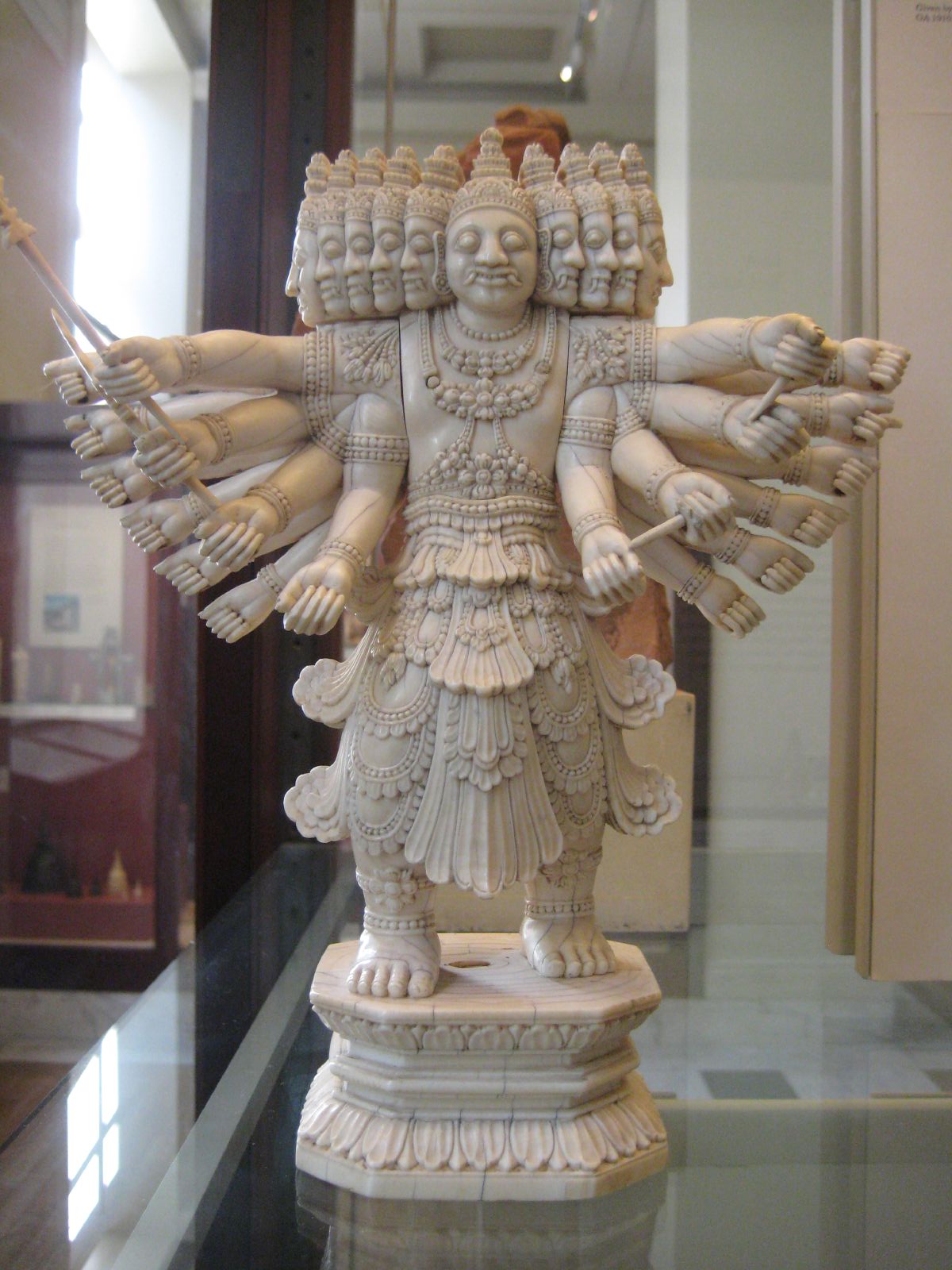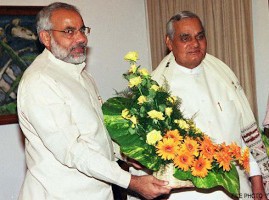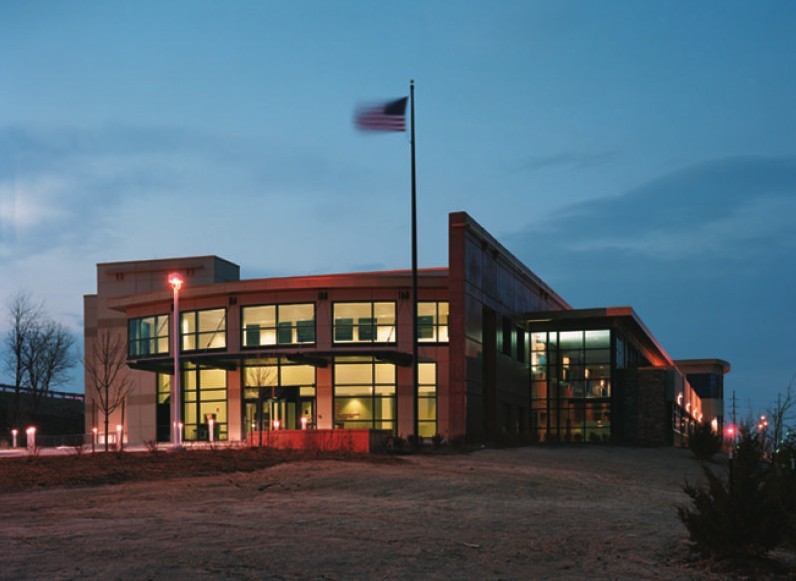|
Pandit Deendayal Upadhyaya Institute Of Archaeology
Pandit Deendayal Upadhyaya Institute of Archaeology is an institute functioning under the Archaeological Survey of India which is under the Ministry of Culture, Govt of India. The institute is located adjacent to Galgotias College of Engineering and Technology in Knowledge Park II area of Greater Noida,Uttar Pradesh, India. The institute was inaugurated by Prime Minister Narendra Modi on 9 March 2019. The institute aims "to provide archaeological opportunities to all and to play a major role in furthering the understanding of archaeological and historical past of the Indian subcontinent, and to remain in the forefront of international research in archaeological sciences ...". The physical infrastructure of the institute, built at an estimated cost of ₹289 crore, includes a campus spread over 25 acres of land, a 3-star green building equipped with all latest technologies, an auditorium with seating capacity of 1000 people, an open air theatre and an Archaeological Museum. Hist ... [...More Info...] [...Related Items...] OR: [Wikipedia] [Google] [Baidu] |
Archaeological Survey Of India
The Archaeological Survey of India (ASI) is an Indian government agency that is responsible for archaeological research and the conservation and preservation of cultural historical monuments in the country. It was founded in 1861 by Alexander Cunningham who also became its first Director-General. History ASI was founded in 1861 by Alexander Cunningham who also became its first Director-General. The first systematic research into the subcontinent's history was conducted by the Asiatic Society, which was founded by the British Indologist William Jones on 15 January 1784. Based in Calcutta, the society promoted the study of ancient Sanskrit and Persian texts and published an annual journal titled ''Asiatic Researches''. Notable among its early members was Charles Wilkins who published the first English translation of the '' Bhagavad Gita'' in 1785 with the patronage of the then Governor-General of Bengal, Warren Hastings. However, the most important of the society's achieveme ... [...More Info...] [...Related Items...] OR: [Wikipedia] [Google] [Baidu] |
Ministry Of Culture (India)
The Ministry of Culture is the Indian government ministry charged with preservation and promotion of art and culture of India. G. Kishan Reddy is the current Minister of Culture. Recently the government has established the National Mission on Libraries India under this ministry. Organisation *Attached offices **Archaeological Survey of India **Central Secretariat Library ** National Archives of India *Subordinate offices **Anthropological Survey of India, Kolkata **Central Reference Library, Kolkata **National Research Laboratory for Conservation of Cultural Property, Lucknow **National Gallery of Modern Art, New Delhi **National Gallery of Modern Art, Mumbai ** National Gallery of Modern Art, Bengaluru **National Library of India, Kolkata **National Museum, New Delhi *Autonomous organisations ** National Mission for Manuscripts, Delhi ** Allahabad Museum, Prayagraj **Asiatic Society, Kolkata ** Central Institute of Buddhist Studies, Jammu and Kashmir **Central Institute of Hi ... [...More Info...] [...Related Items...] OR: [Wikipedia] [Google] [Baidu] |
Govt Of India
The Government of India (ISO: ; often abbreviated as GoI), known as the Union Government or Central Government but often simply as the Centre, is the national government of the Republic of India, a federal democracy located in South Asia, consisting of 28 union states and eight union territories. Under the Constitution, there are three primary branches of government: the legislative, the executive and the judiciary, whose powers are vested in a bicameral Parliament, President, aided by the Council of Ministers, and the Supreme Court respectively. Through judicial evolution, the Parliament has lost its sovereignty as its amendments to the Constitution are subject to judicial intervention. Judicial appointments in India are unique in that the executive or legislature have negligible say. Etymology and history The Government of India Act 1833, passed by the British parliament, is the first such act of law with the epithet "Government of India". Basic structure The govern ... [...More Info...] [...Related Items...] OR: [Wikipedia] [Google] [Baidu] |
Knowledge Park II, Greater Noida
Knowledge Park II or Knowledge Park 2 () is sector in south-western Greater Noida, Uttar Pradesh, India. Bordered by Knowledge Park I to the east, Knowledge Park III to the north and Sector 150, Noida to the west, it serves the Knowledge Park II metro station alongside numerous private and public institutes, including Galgotias College Galgotias College, officially the Galgotias Campus One, is the corporate headquarters of Galgotias Educational Institutions (GEI) in Knowledge Park II, Greater Noida, Uttar Pradesh, India, consisting of three federated institutes affiliated ..., Greater Noida Institute of Technology (GNIOT) and Mangalmay Institute of Engineering and Technology. References {{Reflist Geography of Uttar Pradesh ... [...More Info...] [...Related Items...] OR: [Wikipedia] [Google] [Baidu] |
Greater Noida
Greater Noida is a Planned community, planned city located in Gautam Buddha Nagar district of the Indian state of Uttar Pradesh. The city was created as an extension to Noida, Noida area under the ''UP Industrial Area Development Act, 1976''. Situated south-east of the capital city of New Delhi, it takes around 30 minutes to travel between the cities via the Noida-Greater Noida Expressway. The city is administered by Greater Noida Industrial Development Authority (GNIDA). History In the early 1980s, the Government of India realised that the rapid rate at which Delhi was expanding would result in chaos. Hence, they planned to develop residential and industrial areas around the capital to reduce the demographic burden. Before Greater Noida City, two areas had been developed—Gurgaon, across the border from Haryana, and Noida, across the border with Uttar Pradesh. Greater Noida Notified Area – 38000 Ha (380 km2) comprising 124 villages. Noida's infrastructure was carefu ... [...More Info...] [...Related Items...] OR: [Wikipedia] [Google] [Baidu] |
Uttar Pradesh
Uttar Pradesh (; , 'Northern Province') is a state in northern India. With over 200 million inhabitants, it is the most populated state in India as well as the most populous country subdivision in the world. It was established in 1950 after India had become a republic. It was a successor to the United Provinces (UP) during the period of the Dominion of India (1947–1950), which in turn was a successor to the United Provinces (UP) established in 1935, and eventually of the United Provinces of Agra and Oudh established in 1902 during the British Raj. The state is divided into 18 divisions and 75 districts, with the state capital being Lucknow, and Prayagraj serving as the judicial capital. On 9 November 2000, a new state, Uttaranchal (now Uttarakhand), was created from Uttar Pradesh's western Himalayan hill region. The two major rivers of the state, the Ganges and its tributary Yamuna, meet at the Triveni Sangam in Prayagraj, a Hindu pilgrimage site. Ot ... [...More Info...] [...Related Items...] OR: [Wikipedia] [Google] [Baidu] |
Prime Minister Narendra Modi
Narendra Damodardas Modi (; born 17 September 1950) is an Indian politician serving as the 14th and current Prime Minister of India since 2014. Modi was the Chief Minister of Gujarat from 2001 to 2014 and is the Member of Parliament from Varanasi. He is a member of the Bharatiya Janata Party (BJP) and of the Rashtriya Swayamsevak Sangh (RSS), a right-wing Hindu nationalist paramilitary volunteer organisation. He is the longest serving prime minister from outside the Indian National Congress. Modi was born and raised in Vadnagar in northeastern Gujarat, where he completed his secondary education. He was introduced to the RSS at age eight. He has reminisced about helping out after school at his father's tea stall at the Vadnagar railway station. At age 18, Modi was married to Jashodaben Chimanlal Modi, whom he abandoned soon after. He first publicly acknowledged her as his wife more than four decades later when required to do so by Indian law, but has made no contact with he ... [...More Info...] [...Related Items...] OR: [Wikipedia] [Google] [Baidu] |
Green Building
Green building (also known as green construction or sustainable building) refers to both a structure and the application of processes that are environmentally responsible and resource-efficient throughout a building's life-cycle: from planning to design, construction, operation, maintenance, renovation, and demolition. This requires close cooperation of the contractor, the architects, the engineers, and the client at all project stages.Yan Ji and Stellios Plainiotis (2006): Design for Sustainability. Beijing: China Architecture and Building Press. The Green Building practice expands and complements the classical building design concerns of economy, utility, durability, and comfort. Green building also refers to saving resources to the maximum extent, including energy saving, land saving, water saving, material saving, etc., during the whole life cycle of the building, protecting the environment and reducing pollution, providing people with healthy, comfortable and efficient u ... [...More Info...] [...Related Items...] OR: [Wikipedia] [Google] [Baidu] |
Iconography
Iconography, as a branch of art history, studies the identification, description and interpretation of the content of images: the subjects depicted, the particular compositions and details used to do so, and other elements that are distinct from artistic style. The word ''iconography'' comes from the Greek ("image") and ("to write" or ''to draw''). A secondary meaning (based on a non-standard translation of the Greek and Russian equivalent terms) is the production or study of the religious images, called "icons", in the Byzantine and Orthodox Christian tradition (see Icon). This usage is mostly found in works translated from languages such as Greek or Russian, with the correct term being "icon painting". In art history, "an iconography" may also mean a particular depiction of a subject in terms of the content of the image, such as the number of figures used, their placing and gestures. The term is also used in many academic fields other than art history, for example semiotics ... [...More Info...] [...Related Items...] OR: [Wikipedia] [Google] [Baidu] |
Epigraphy
Epigraphy () is the study of inscriptions, or epigraphs, as writing; it is the science of identifying graphemes, clarifying their meanings, classifying their uses according to dates and cultural contexts, and drawing conclusions about the writing and the writers. Specifically excluded from epigraphy are the historical significance of an epigraph as a document and the artistic value of a literature, literary composition. A person using the methods of epigraphy is called an ''epigrapher'' or ''epigraphist''. For example, the Behistun inscription is an official document of the Achaemenid Empire engraved on native rock at a location in Iran. Epigraphists are responsible for reconstructing, translating, and dating the trilingual inscription and finding any relevant circumstances. It is the work of historians, however, to determine and interpret the events recorded by the inscription as document. Often, epigraphy and history are competences practised by the same person. Epigraphy ... [...More Info...] [...Related Items...] OR: [Wikipedia] [Google] [Baidu] |
Numismatics
Numismatics is the study or collection of currency, including coins, tokens, paper money, medals and related objects. Specialists, known as numismatists, are often characterized as students or collectors of coins, but the discipline also includes the broader study of money and other means of payment used to resolve debts and exchange goods. The earliest forms of money used by people are categorised by collectors as "Odd and Curious", but the use of other goods in barter exchange is excluded, even where used as a circulating currency (e.g., cigarettes or instant noodles in prison). As an example, the Kyrgyz people used horses as the principal currency unit, and gave small change in lambskins; the lambskins may be suitable for numismatic study, but the horses are not. Many objects have been used for centuries, such as cowry shells, precious metals, cocoa beans, large stones, and gems. Etymology First attested in English 1829, the word ''numismatics'' comes from the adjective ... [...More Info...] [...Related Items...] OR: [Wikipedia] [Google] [Baidu] |









